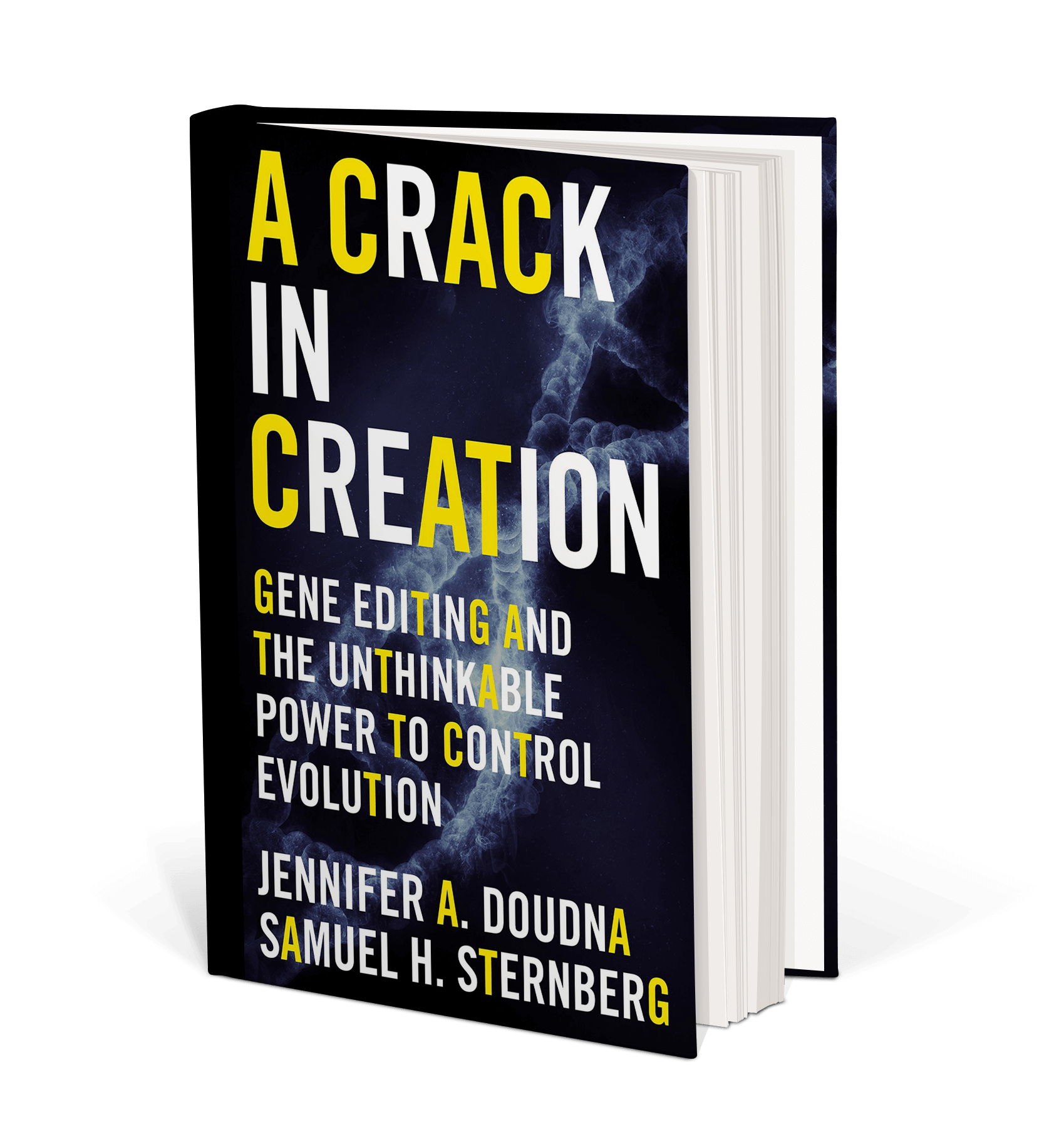Microbiologist Jennifer Doudna is a serious candidate for the Nobel Prize after discovering the genetic editing tool, CRISPR. Her book, ‘A Crack in Creation’, reveals the discovery and her subsequent nightmares. ‘Had I created a monster?’.
By now, most people have at least heard of the new gene editing technique called CRISPR-Cas. The five-letter acronym relates to a bacterial defence system against viruses, while Cas stands for CRISPR–associated proteins that target viral DNA and shred it to pieces. The discovery of this advanced anti-viral defence system in bacteria reads like a spy-novel in which pieces of information slowly fall into place until the researchers realize that the same DNA-targeting mechanisms may work in other cells as well. Doudna writes: ‘Out of this bacterial weapons system, we had built the means to rewrite the code of life.’
Doudna and her colleagues discovered that a Cas9 protein armed with a string of RNA injected into a cell will automatically target the right sequence within 3 billion base pairs and cut the DNA helix on the spot. Doudna writes: ‘All you had to do was select the desired twenty-letter DNA sequence to edit and then convert that sequence into a matching twenty-letter code of RNA. Once inside the cell, the RNA would couple with its DNA match using base pairing, and Cas9 would slice apart the DNA.’ Next, the cell’s own genome repairing mechanisms kick in, resulting in a knockout, replacement or reversal of the targeted gene.
Genetic modification has never been so precise and cheap
Sure, genetic modification has been in use since the 1970s, or earlier if you want to include induced random genetic variations by exposure to radiation. Genetic modification has never been so precise and so cheap as with CRISPR-Cas. Just consider a comparative test with an earlier gene editing technology called ZFN. It took months to prepare the ZFN tool to target a particular gene, and it would cost about 25,000 dollars. With CRISPR, designing an RNA sequence took ten minutes behind a PC, and generating it cost a few dozen dollars. By publishing their findings in June 2012, Doudna and colleagues made precision gene editing available to every lab and scientist.
Since then, she has watched in awe how the technology took off. Although the technology stems from bacteria, it also worked in every conceivable species of plant or animal. CRISPR can make crops pest-resistant; it can create cows without horns; eco-friendly pigs; or humanised pigs whose organs could be implanted into humans.
Nightmares about tsunamis and Hitler
It was about a year later that Doudna, born in Hawaii, started having nightmares about tsunamis and about Hitler wanting to know more about CRISPR’s potential for his eugenics programme.
Her nightmares motivated her to write a book to raise public awareness about CRISPR’s potentials and risks. Fears about genetic modification might stop this powerful technology in its tracks. On the other hand, using CRISPR to tackle genetic diseases may liberate mankind from debilitating disorders such as cystic fibrosis, Duchenne’s muscle atrophy or Huntington’s disease. But what about genetic improvements of species, including our own? Will humankind take evolution in hand and adapt species to its desires, purposes, and fancies?
Doudna openly shares her hopes, her doubts and her changing opinions in the second part of the book. The least we can do is to prepare ourselves for the discussions to come, for CRISPR-Cas has the potential to remake nature. For better and for worse.
Jennifer Doudna Samuel Sternberg, ‘A Crack in Creation, The New Power to Control Evolution’, Vintage Publishing 2017, 304 pages, 18 euro
Do you have a question or comment about this article?
j.w.wassink@tudelft.nl


Comments are closed.